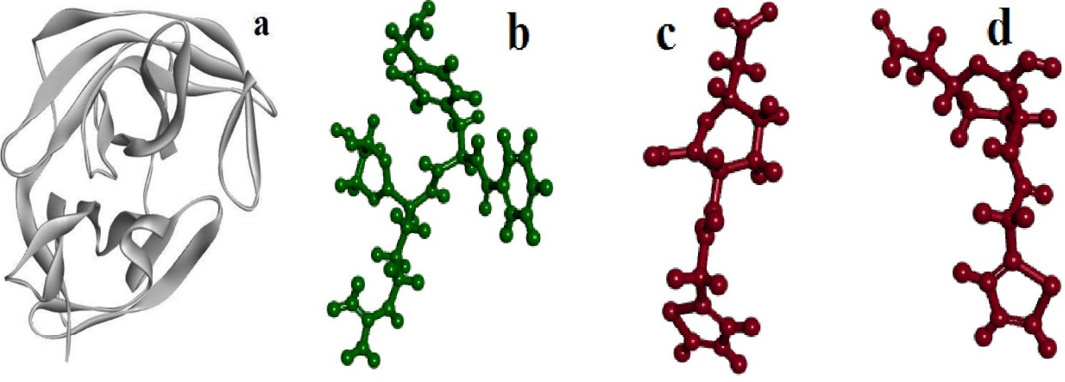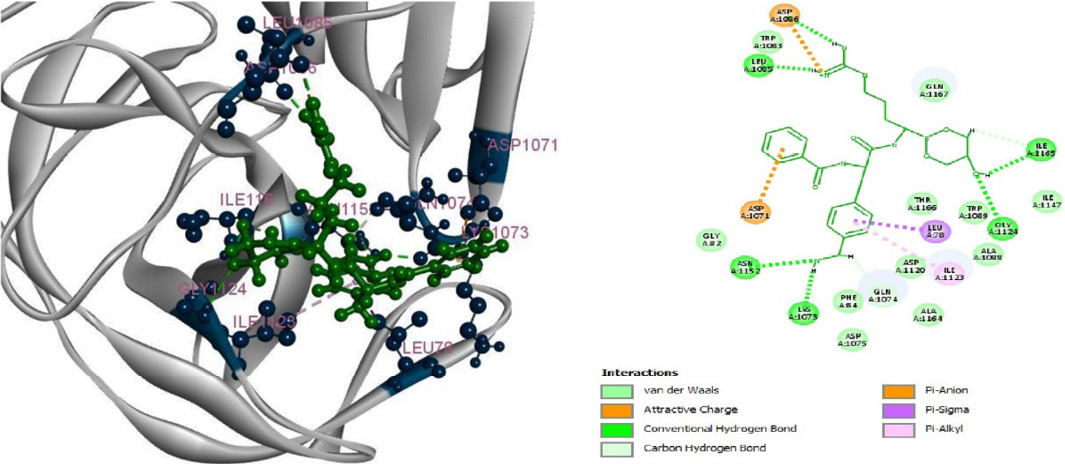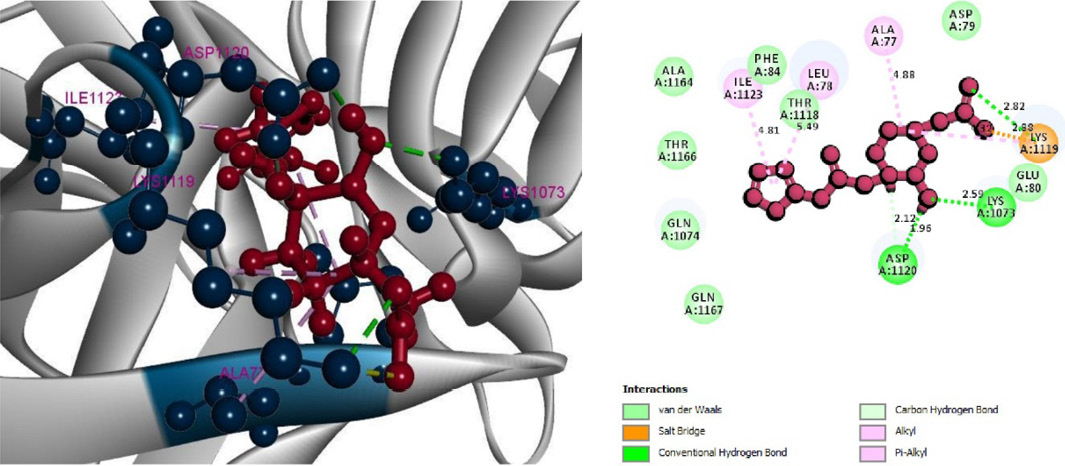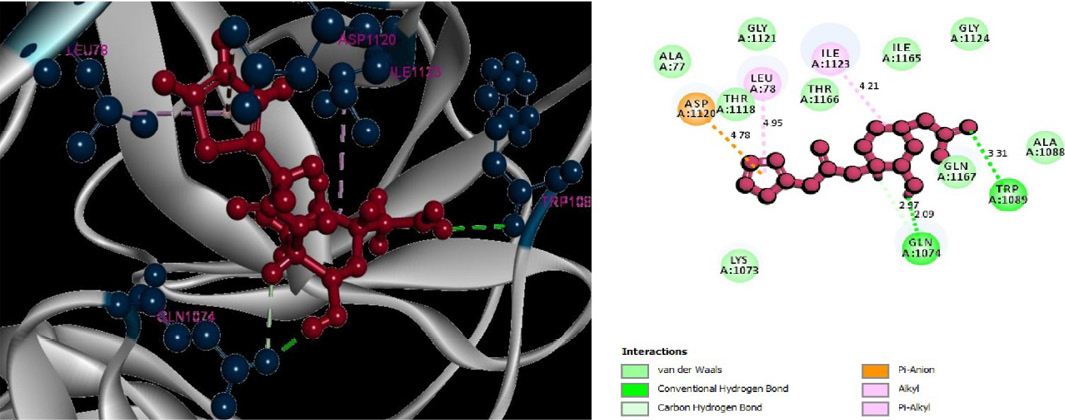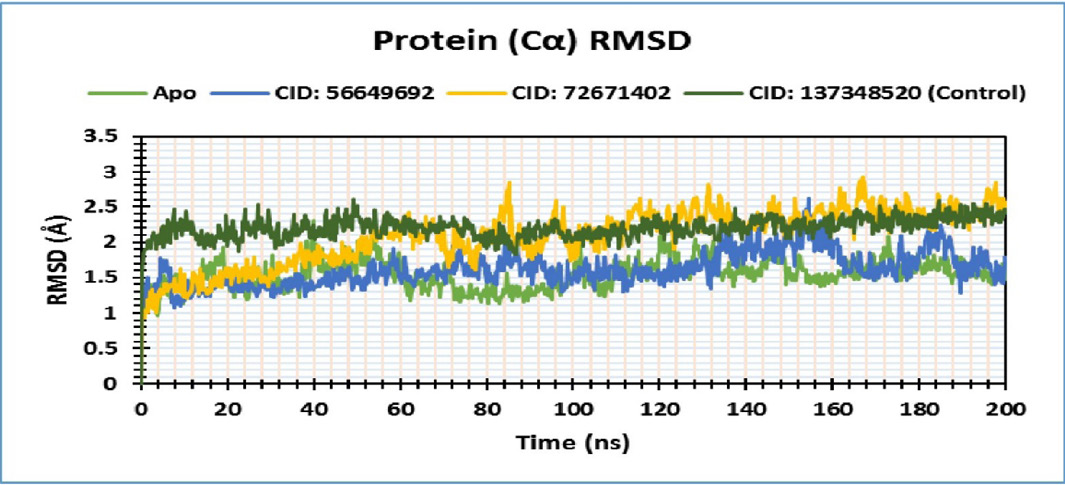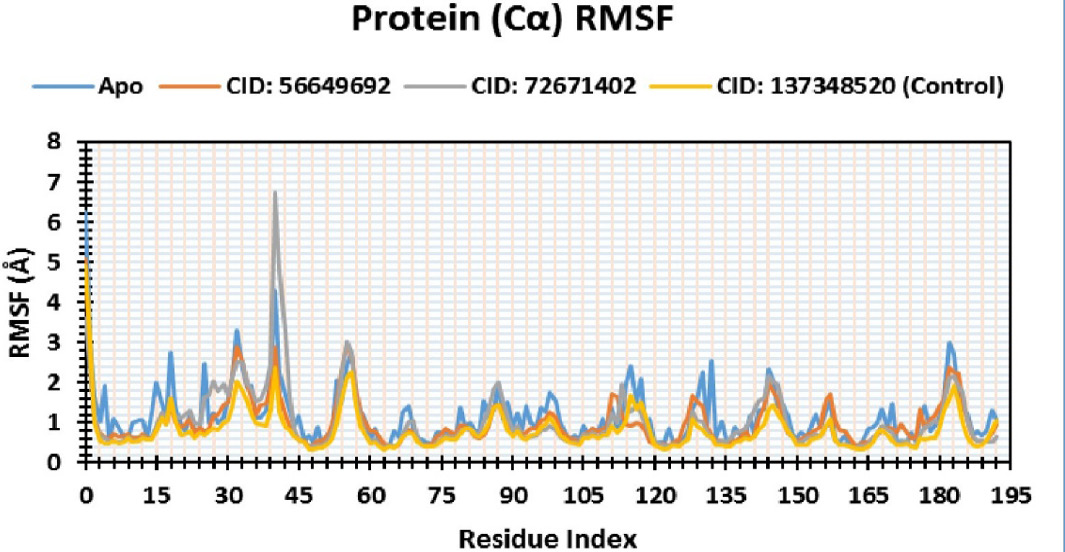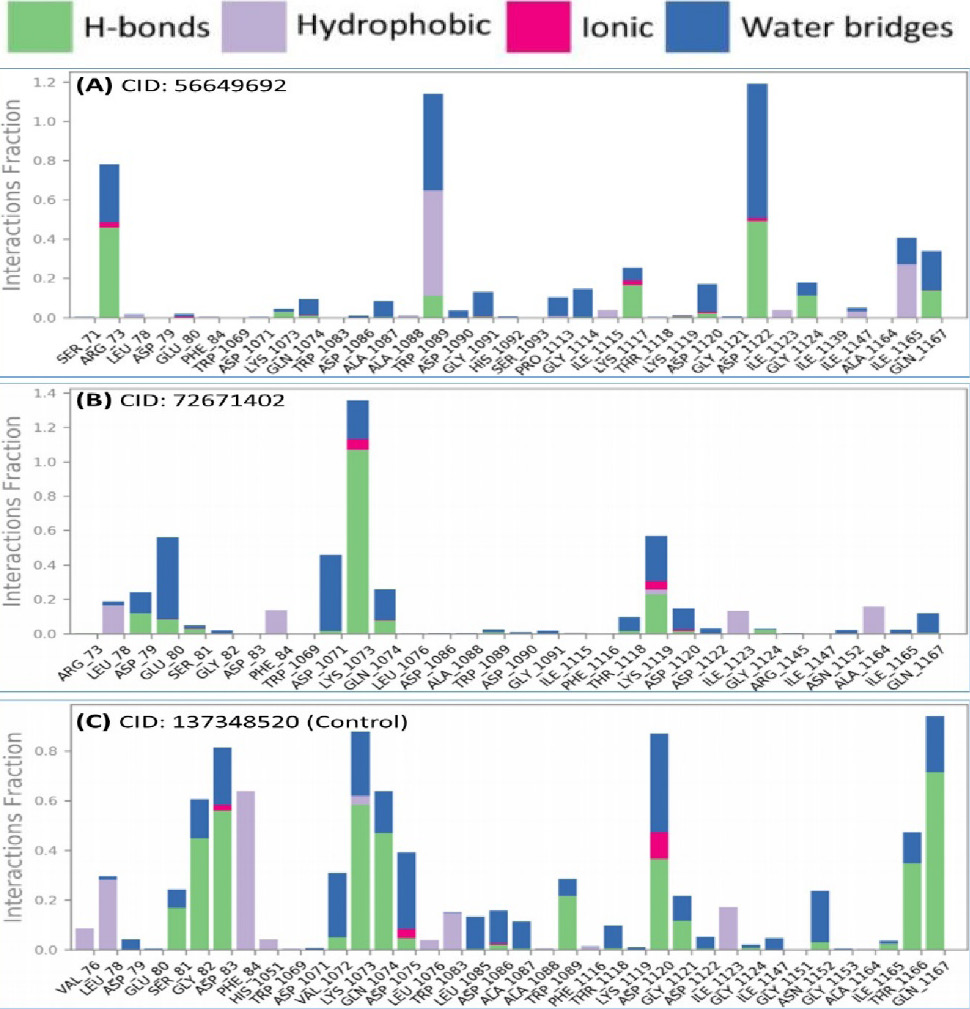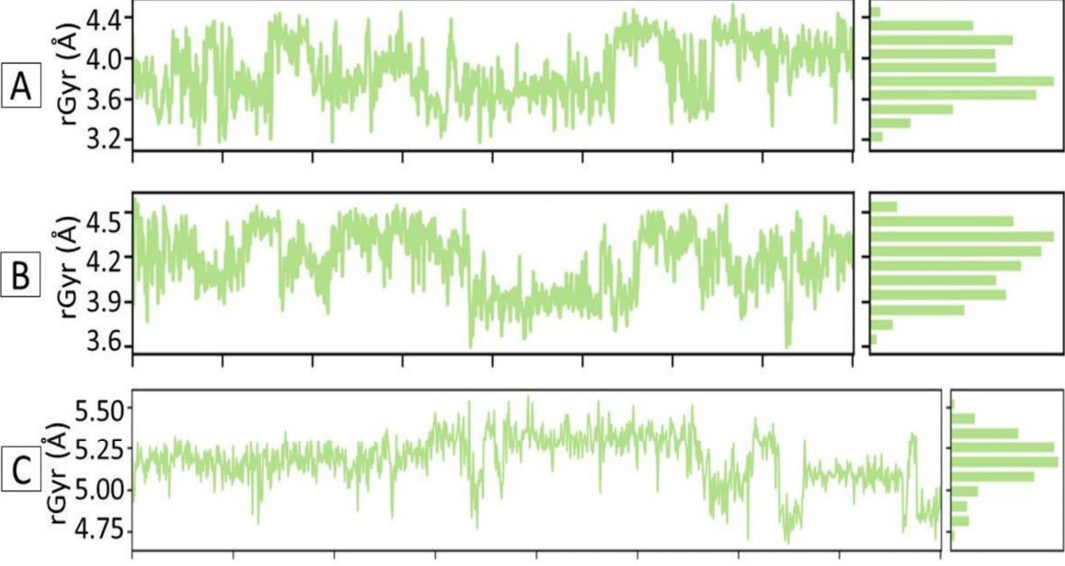In-Silico Identification of Potential NS2B-NS3 Protease Inhibitors against Zika Virus
In-Silico Identification of Potential NS2B-NS3 Protease Inhibitors against Zika Virus
Nusrat Jahan Lily1*, Kazi Abdus Sobur2, Minhaz Zabin Saif Mim3, Anika Thasin Bithi4, Hamja Hasanat5, Tabassum Mounita5, Foysal Ahammad6,7, Abdus Samad7,8 and Palash Bose2
Represent the interaction between the protein 5LC0 and Control ligand (PubChem CID: 127348520). In the left side, the interaction is shown in 3D and in right side in 2D.
Represent the interaction between the protein 5LC0 and PubChem CID: 56649692. In the left side, the interaction is shown in 3D and in right side in 2D.
Represent the interaction between the protein 5LC0 and PubChem CID: 72671402. In the left side, the interaction is shown in 3D and in right side in 2D.
Represent the RMSD value from the complexed structure of protein-ligands from molecular dynamic simulation at 200ns run. Receptor (PDB ID: 5LC0, Control ligand (PubChem CID: 127348520), PubChem CID: 56649692 and PubChem CID: 72671402.
Represent the RMSD value from the complexed structure of protein-ligands from molecular dynamic simulation at 200ns run. Receptor (PDB ID: 5LC0, Control ligand (PubChem CID: 127348520), PubChem CID: 56649692 and PubChem CID: 72671402.
Represent the protein-ligand interaction via hydrogen bonds, hydrophobic interactions, ionic interaction and water bridges from molecular dynamic simulation at 200ns run. Receptor (PDB ID: 5LC0, Control ligand (PubChem CID: 127348520), PubChem CID: 56649692 and PubChem CID: 72671402.
Represent ligand properties (Radius of gyration) of ligands. Here, A is CID: 56649692, B is CID: 72671402 and C is CID: 137348520 (Control ligand).
2D structures of (PubChem CID: 72671402 and PubChem CID: 56649692).




